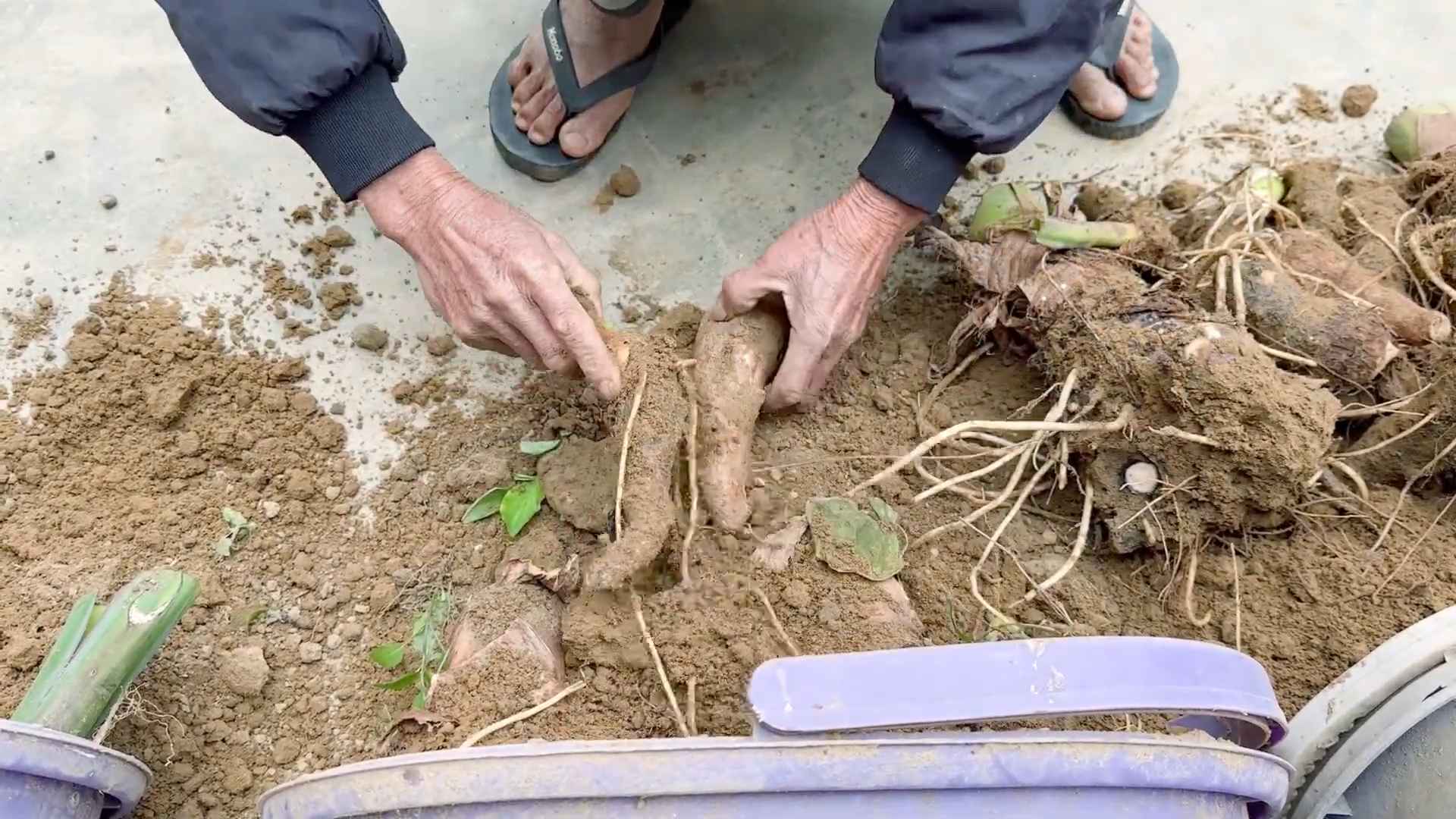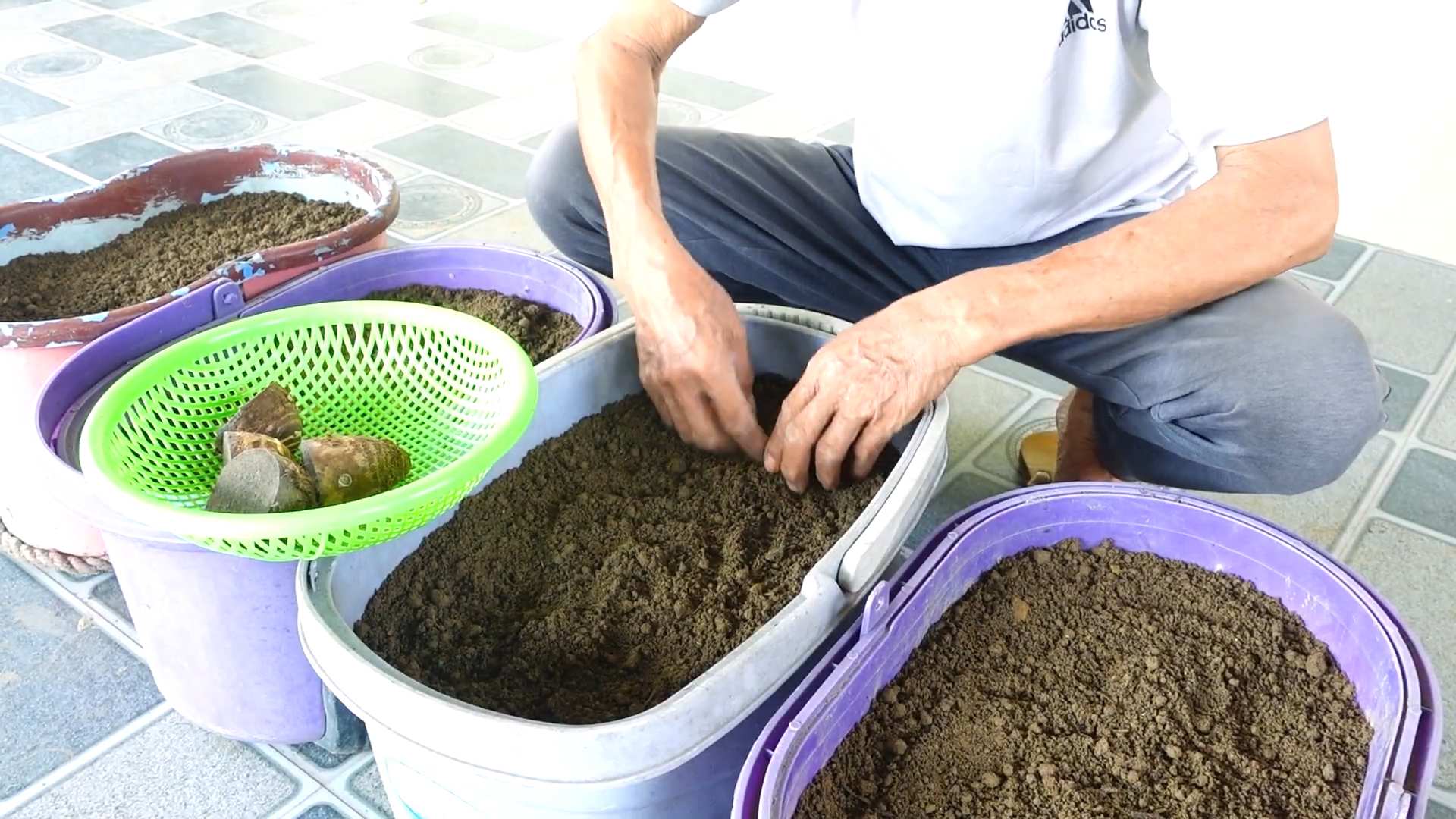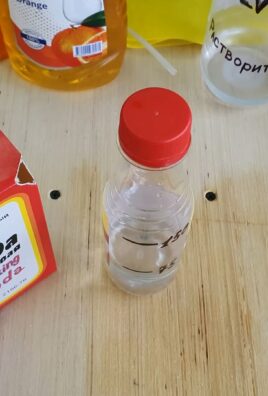Baking Soda and Vinegar Reaction: The dynamic duo of your pantry isn’t just for science experiments anymore! For generations, folks have known about the fizzing fun of mixing baking soda and vinegar, but did you know this simple reaction holds incredible potential for your home garden? Think of it as a natural, DIY toolkit for tackling common gardening woes.
I’m excited to share some clever ways to harness the power of the baking soda and vinegar reaction to keep your plants thriving. We’ll explore how this bubbly blend can help you combat weeds, clean your garden tools, and even test your soil’s pH. Forget harsh chemicals and expensive solutions – this is all about embracing simple, sustainable gardening practices.
Why is this DIY trick so essential? Well, many gardeners are looking for eco-friendly alternatives to traditional pesticides and herbicides. Plus, who doesn’t love saving money? The baking soda and vinegar reaction offers a cost-effective and readily available solution to many common gardening problems. So, grab your baking soda, your vinegar, and let’s get ready to unleash the power of this amazing reaction in your garden!

DIY Drain Cleaning Powerhouse: Baking Soda and Vinegar
Okay, let’s face it, clogged drains are the bane of every homeowner’s existence. Store-bought drain cleaners can be harsh, expensive, and frankly, a little scary to use. But fear not! I’m going to show you how to unclog those pesky drains using two simple, eco-friendly ingredients you probably already have in your pantry: baking soda and vinegar. This method is surprisingly effective, and it’s a whole lot gentler on your pipes (and your wallet!).
What You’ll Need
Before we dive in, let’s gather our supplies. This is a pretty straightforward project, so the list is short and sweet:
* 1 cup of baking soda
* 2 cups of white vinegar (apple cider vinegar works in a pinch, but white vinegar is best)
* Hot water (a kettle or pot will do)
* A plunger (optional, but helpful for stubborn clogs)
* A measuring cup
* A timer or your phone
Understanding the Science Behind the Fizz
So, why does this baking soda and vinegar concoction work so well? It’s all about the chemical reaction! Baking soda (sodium bicarbonate) is a mild alkali, and vinegar (acetic acid) is, well, an acid. When they combine, they create carbon dioxide gas. This fizzing action helps to loosen and break down the gunk that’s clogging your drain. The hot water then helps to flush everything away. It’s a simple, yet powerful, cleaning process.
Step-by-Step Drain Unclogging Guide
Alright, let’s get down to business! Here’s how to unclog your drain using the baking soda and vinegar method:
1. Clear the Area: First things first, remove any standing water from the sink or tub. You want the baking soda and vinegar to directly attack the clog, not just sit on top of a pool of water. Grab a cup or small bucket and scoop out as much water as you can.
2. Pour in the Baking Soda: Now, pour one cup of baking soda down the drain. Try to get as much of it down the drain opening as possible. Don’t worry if a little bit sticks to the sides; it’ll eventually make its way down.
3. Add the Vinegar: Next, slowly pour two cups of white vinegar down the drain. As soon as the vinegar hits the baking soda, you’ll hear the fizzing begin! This is the magic happening.
4. Let it Fizz and Bubble: Let the baking soda and vinegar mixture work its magic for at least 30 minutes. I usually set a timer on my phone so I don’t forget. During this time, the fizzing action will be breaking down the clog. For really stubborn clogs, you can let it sit for a few hours, or even overnight. Just be sure to cover the drain opening with a plug or tape to contain the fizzing and prevent the gas from escaping.
5. Flush with Hot Water: After the waiting period, carefully pour a pot or kettle of boiling hot water down the drain. The hot water will help to flush away the loosened debris. Be careful not to splash yourself with the hot water!
6. Test the Drain: Turn on the faucet and see if the water drains freely. If it does, congratulations! You’ve successfully unclogged your drain. If the water is still draining slowly, move on to the next step.
7. Repeat if Necessary: If the drain is still clogged, repeat steps 2 through 5. Sometimes, it takes a couple of tries to completely clear a stubborn clog.
8. Plunger Power (If Needed): If you’ve tried the baking soda and vinegar method a couple of times and the drain is still clogged, it’s time to bring out the plunger. Make sure there’s enough water in the sink or tub to cover the cup of the plunger. Create a tight seal around the drain opening and plunge vigorously for several minutes. Remove the plunger and see if the water drains. Repeat as needed.
Dealing with Stubborn Clogs
Sometimes, even the baking soda and vinegar power combo isn’t enough to tackle a particularly stubborn clog. Here are a few extra tips and tricks to try:
* Boiling Water Alone: Before you even try the baking soda and vinegar, sometimes just pouring a pot of boiling water down the drain can do the trick. This is especially effective for clogs caused by grease or soap buildup.
* The Wire Hanger Trick: Straighten out a wire coat hanger and bend one end into a small hook. Carefully insert the hooked end into the drain and try to fish out any hair, debris, or other gunk that might be causing the clog. Be careful not to push the clog further down the drain!
* Check the P-Trap: The P-trap is the curved pipe under your sink. It’s designed to trap debris and prevent sewer gases from entering your home. Sometimes, the P-trap itself can become clogged. To clean it, place a bucket under the P-trap to catch any water. Loosen the slip nuts that connect the P-trap to the drain pipes. Carefully remove the P-trap and clean out any debris. Reassemble the P-trap and tighten the slip nuts.
* Enzyme Drain Cleaners: If you’re still having trouble, you might consider using an enzyme drain cleaner. These cleaners use enzymes to break down organic matter, such as hair and food particles. They’re generally safer for your pipes than chemical drain cleaners.
Preventing Future Clogs
Prevention is always better than cure! Here are a few tips to help prevent future drain clogs:
* Use Drain Screens: Install drain screens in your sinks and tubs to catch hair and other debris before they go down the drain.
* Avoid Pouring Grease Down the Drain: Never pour grease or oil down the drain. It will solidify and cause a major clog. Instead, pour grease into a container and dispose of it in the trash.
* Flush with Hot Water Regularly: Once a week, flush your drains with hot water to help prevent buildup.
* Baking Soda and Vinegar Maintenance: As a preventative measure, you can pour a cup of baking soda followed by two cups of vinegar down your drains once a month. Let it sit for 30 minutes, then flush with hot water.
Safety First!
While baking soda and vinegar are generally safe, it’s always a good idea to take a few precautions:
* Wear Gloves: Wear gloves to protect your hands from the baking soda and vinegar mixture.
* Avoid Mixing with Other Cleaners: Never mix baking soda and vinegar with other drain cleaners, especially those containing bleach. This can create dangerous fumes.
* Ventilation: Make sure the area is well-ventilated when using baking soda and vinegar.
* Eye Protection: Consider wearing eye protection to prevent splashes.
Why I Love This Method
I’ve been using the baking soda and vinegar method for years, and I absolutely swear by it. It’s not only effective, but it’s also:
* Eco-Friendly: Baking soda and vinegar are natural and biodegradable, so they’re much better for the environment than harsh chemical drain cleaners.
* Affordable: You probably already have baking soda and vinegar in your pantry, so it’s a very inexpensive way to unclog your drains.
* Safe for Pipes: Unlike some chemical drain cleaners, baking soda and vinegar won’t damage your pipes.
* Easy to Use: The process is simple and straightforward, even for beginners.
So, there you have it! My go-to method for unclogging drains using baking soda and vinegar. Give it a try, and I’m confident you’ll be amazed at how well it works. Happy unclogging!

Conclusion
So, there you have it! Mastering the art of the baking soda and vinegar reaction is not just a fun science experiment; it’s a powerful, eco-friendly, and surprisingly versatile tool for your home. From tackling stubborn stains to unclogging drains and even boosting your laundry, this simple combination offers a chemical-free alternative to harsh commercial products.
Why is this DIY trick a must-try? Because it’s effective, affordable, and readily available. You likely already have baking soda and vinegar in your pantry, making it an incredibly accessible solution for a wide range of household problems. Forget spending a fortune on specialized cleaners filled with questionable chemicals. Embrace the simplicity and power of this dynamic duo.
But the possibilities don’t stop there! Feel free to experiment with variations to suit your specific needs. For example, for a more potent drain cleaner, try adding boiling water after the initial reaction. To deodorize your garbage disposal, add citrus peels along with the baking soda and vinegar. When cleaning grout, create a paste of baking soda and vinegar for targeted scrubbing. The key is to understand the basic principle – the fizzing action of the reaction helps to loosen dirt and grime – and then adapt it to your particular cleaning challenge.
We encourage you to dive in and try this **baking soda and vinegar reaction** for yourself. Don’t be afraid to experiment and discover new ways to harness its cleaning power. Once you experience the effectiveness and simplicity of this DIY solution, you’ll wonder why you didn’t try it sooner.
More importantly, we want to hear about your experiences! Share your successes, your failures, and any creative variations you come up with in the comments below. Let’s build a community of DIY enthusiasts who are passionate about finding natural and effective solutions for everyday problems. Your insights could help others discover the amazing potential of this simple yet powerful combination. So, go ahead, give it a try, and let us know what you think!
Frequently Asked Questions (FAQs)
What exactly happens when baking soda and vinegar react?
When baking soda (sodium bicarbonate) and vinegar (acetic acid) are mixed, they undergo a chemical reaction that produces carbon dioxide gas, water, and sodium acetate. The carbon dioxide is what causes the fizzing and bubbling effect. This fizzing action helps to loosen dirt, grime, and debris, making it an effective cleaning agent. The sodium acetate, while less noticeable, is a salt that also contributes to the cleaning process.
Is the baking soda and vinegar reaction safe to use on all surfaces?
While generally safe, it’s always a good idea to test the reaction on an inconspicuous area first, especially on delicate surfaces like marble, granite, or certain types of painted wood. The acidity of vinegar can potentially etch or damage these materials. Avoid using it on aluminum, as it can cause discoloration. For most other surfaces, such as stainless steel, ceramic tile, and porcelain, it’s perfectly safe and effective.
Can I store a mixture of baking soda and vinegar for later use?
No, you should not store a pre-mixed solution of baking soda and vinegar. The reaction happens almost immediately, and the carbon dioxide gas will dissipate over time, rendering the mixture ineffective. It’s best to mix them fresh each time you need them to maximize their cleaning power. Plus, storing the mixture in a closed container could cause pressure to build up, potentially leading to an explosion.
How much baking soda and vinegar should I use for different cleaning tasks?
The ratio of baking soda to vinegar can vary depending on the task. For general cleaning, a 1:1 ratio is a good starting point. For example, you can use 1/2 cup of baking soda followed by 1/2 cup of vinegar. For more stubborn clogs or stains, you can increase the amount of each ingredient. For example, for drain cleaning, you might use 1 cup of baking soda followed by 1 cup of vinegar. Experiment to find the ratio that works best for your specific needs.
Can I use different types of vinegar, like apple cider vinegar, instead of white vinegar?
While white vinegar is generally preferred due to its higher acidity and lack of color, you can use other types of vinegar, such as apple cider vinegar, in a pinch. However, keep in mind that apple cider vinegar has a lower acidity than white vinegar, so it might not be as effective for certain cleaning tasks. Also, the color of apple cider vinegar could potentially stain light-colored surfaces, so test it in an inconspicuous area first.
Is the baking soda and vinegar reaction effective for unclogging severely blocked drains?
While the baking soda and vinegar reaction can be effective for minor drain clogs, it might not be strong enough to clear severely blocked drains. For stubborn clogs, you might need to use a drain snake or call a professional plumber. However, using baking soda and vinegar regularly as a preventative measure can help keep your drains clear and prevent severe clogs from forming in the first place.
Can I use the baking soda and vinegar reaction to clean my oven?
Yes, the baking soda and vinegar reaction can be used to clean your oven. To do this, make a paste of baking soda and water and spread it all over the inside of your oven, avoiding the heating elements. Let it sit overnight. The next day, spray the baking soda paste with vinegar and wipe away the loosened grime. This is a natural and effective way to clean your oven without harsh chemicals.
What are some other creative uses for the baking soda and vinegar reaction?
Beyond cleaning, the baking soda and vinegar reaction can be used for a variety of other purposes. You can use it to create a homemade volcano for science experiments, to remove rust from metal objects, or even to tenderize meat. The possibilities are endless!
Is it safe to mix baking soda and vinegar with other cleaning products?
It is generally not recommended to mix baking soda and vinegar with other cleaning products, especially those containing bleach or ammonia. Mixing these chemicals can create dangerous and toxic fumes. Always use baking soda and vinegar on their own to avoid any potential health hazards.
What should I do if I experience any irritation or allergic reaction after using the baking soda and vinegar reaction?
While rare, some people may experience mild skin irritation or allergic reactions after using baking soda or vinegar. If you experience any redness, itching, or swelling, discontinue use immediately and rinse the affected area with plenty of water. If the symptoms persist, consult a doctor or dermatologist. It’s always a good idea to wear gloves when handling cleaning products, even natural ones, to protect your skin.



Leave a Comment